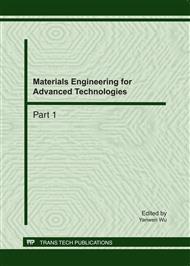[1]
Regarding the promotion of China's animation industry to inform the development of a number of views", NO. 32, 2006, 4( In Chinese).
Google Scholar
[2]
Yuhua Qin, CSCW Technology Research and Development, Inner Mongolia Science and Technology and Economic, 2005, 12, 124-125(In Chinese).
Google Scholar
[3]
Song Haigang, Chen Xueguang, Research and Analysis of the Development of Cscw, Computer Engineering and Applications 2004, 10(1), 7-9(In Chinese).
Google Scholar
[4]
Parker, J. R, Games and Animation: Collaboration Between the Arts and Computer Scinence", Proceedings of ITCC, (2004).
Google Scholar
[5]
Zhijun Liao, The design and realization of Cartoon Manufacturing Business Process System Based On Webjet", Master, s degree paper, Hunan normal university, 2007(In Chinese).
Google Scholar
[6]
Gustavo Zurita, Nelson Baloian , Felipe Baytelman, A collaborative face-to-face design support system based on sketching and gesturing, Advanced Engineering Informatics, 2008, 22(3), 340-349.
DOI: 10.1016/j.aei.2007.09.003
Google Scholar
[7]
Novak, J. D , Cañas, A.J. The Theory Underlying Concept Maps and How to Construct Them,. http: /cmap. ihmc. us/Publications/ResearchPapers/TheoryUnderlyingCo nceptMaps. pdf.
Google Scholar
[8]
Graham Glass. EDU 2. 0 Concept Map David Woods, http: /grahamglass. blogs. com/main/2009/09/edu-20-concept-map. html.
Google Scholar
[9]
Ed Hoffman. How We learn Developing Expertise, http: /pmchallenge. gsfc. nasa. gov/docs/2008/Presentation/Hoffman-ohut. pdf.
Google Scholar
[10]
Xiaoping Liu, Jin Qin, Yiming Tang, An Innovative Function-tree Building Method Based on Similarity Theory and Extension Theory", Proceedings of CAID&CD, 2006, pp: 199-204.
DOI: 10.1109/caidcd.2006.329434
Google Scholar
[11]
Xiao-ping LIU, JI Hao, SHI Hui. A Method To Solve Constraint Conflict Based On The Minimal Conflict Sets, Journal of Engineering Graphics, Accepted. (In Chinese).
Google Scholar
[12]
Thornton Anna C, Genetic algorithm versus simulated annealing satisfaction of large sets of algebraic mechanical design constraints", Proceedings of Artificial Intelligence in Design, 94, Netherland: Kluwer Academic Publishers, 1994, pp: 199-204.
DOI: 10.1007/978-94-011-0928-4_22
Google Scholar
[13]
Bo Jiang, Chun Chen, Jiajun Bu, CoDesign - a collaborative pattern design system based on agent, Proceedings of Computer Supported Cooperative Work in Design, London, Ont., Canada, 2001, pp: 319-323.
DOI: 10.1109/cscwd.2001.942279
Google Scholar
[14]
LIU Yu-xiao, XU Wu, CoEditor: Edit system for group cooperative writing, Computer Engineering and Design, 2005, 26(9), 2530-2532.
Google Scholar
[15]
LIU Xiao-ping, SHI Hui, MAO Zheng-qiang. Cooperative awareness model based on information visualization, [J]. Journal on Communications, 2006, 27(11), pp: 24-30.
Google Scholar


